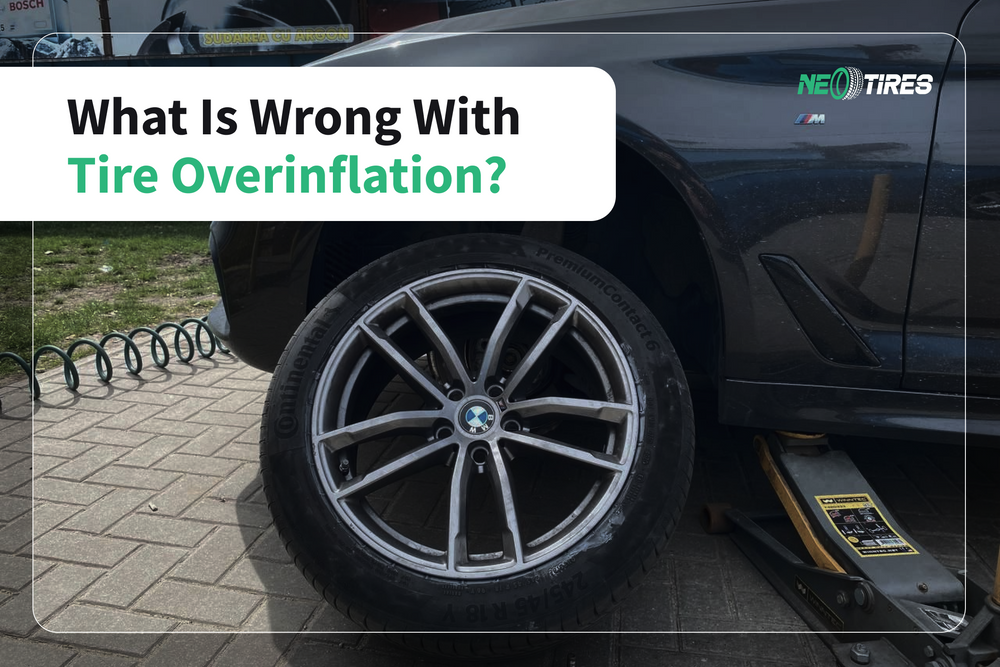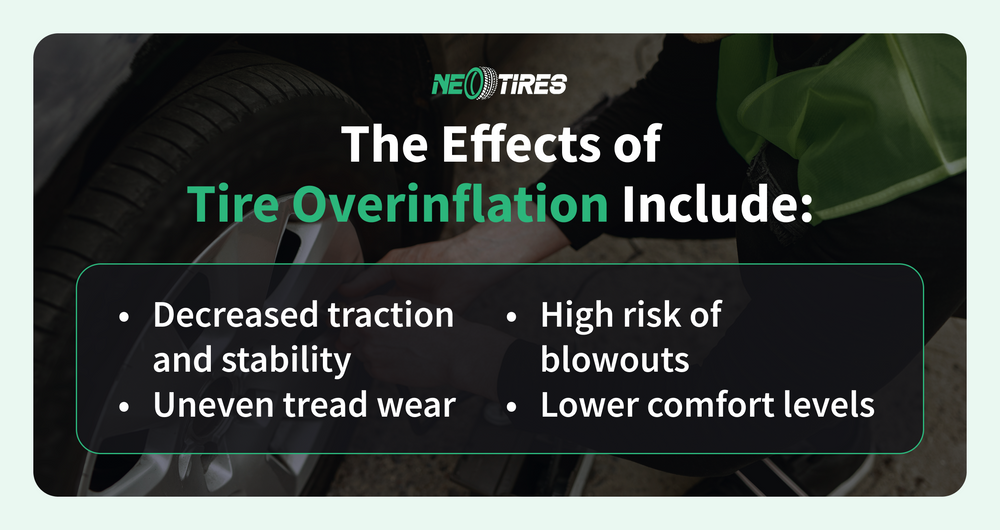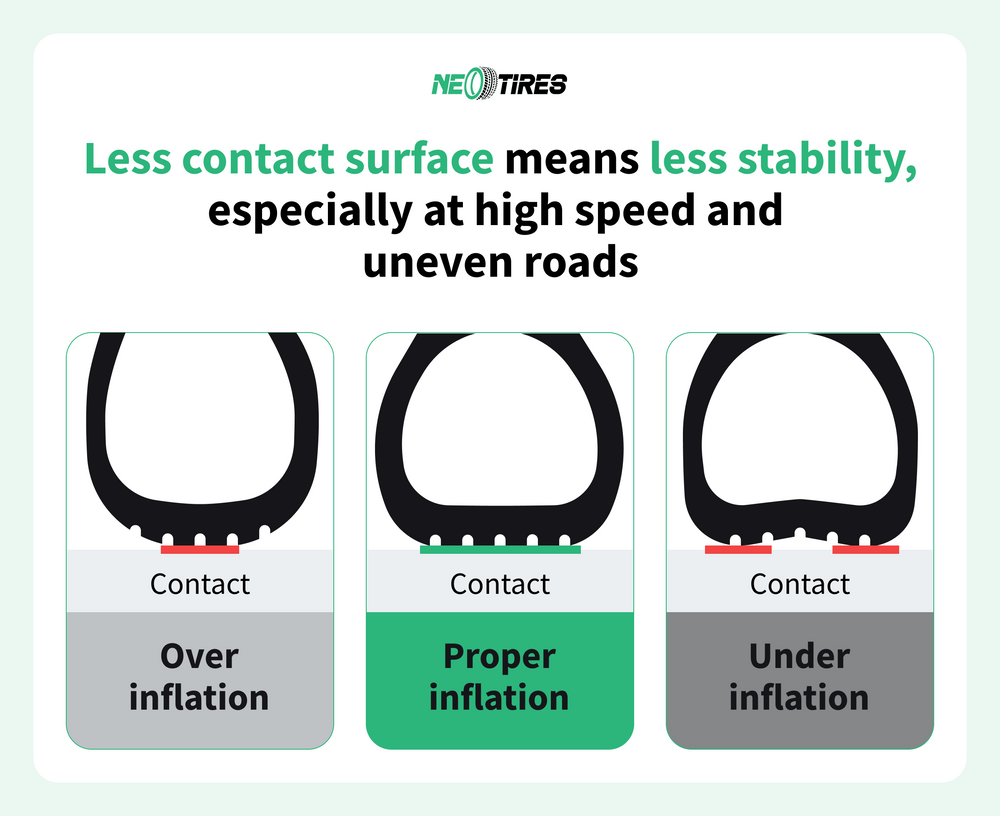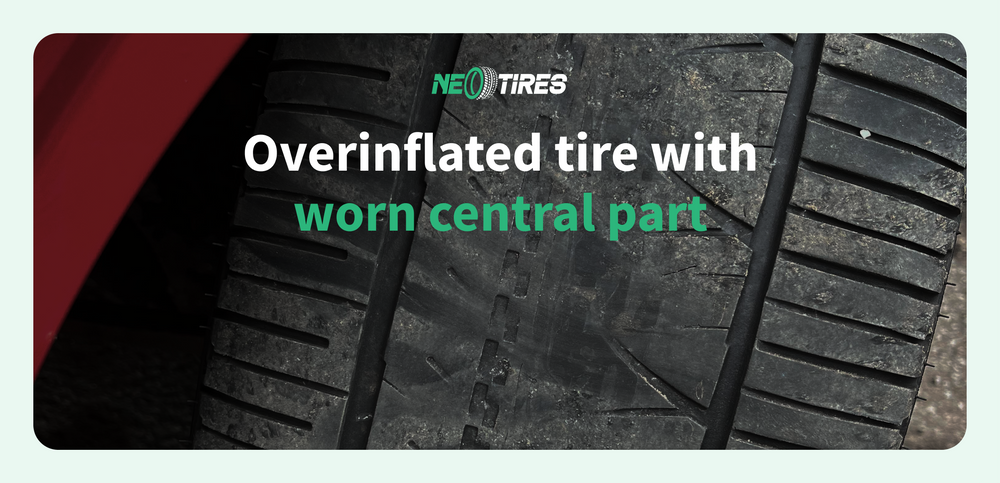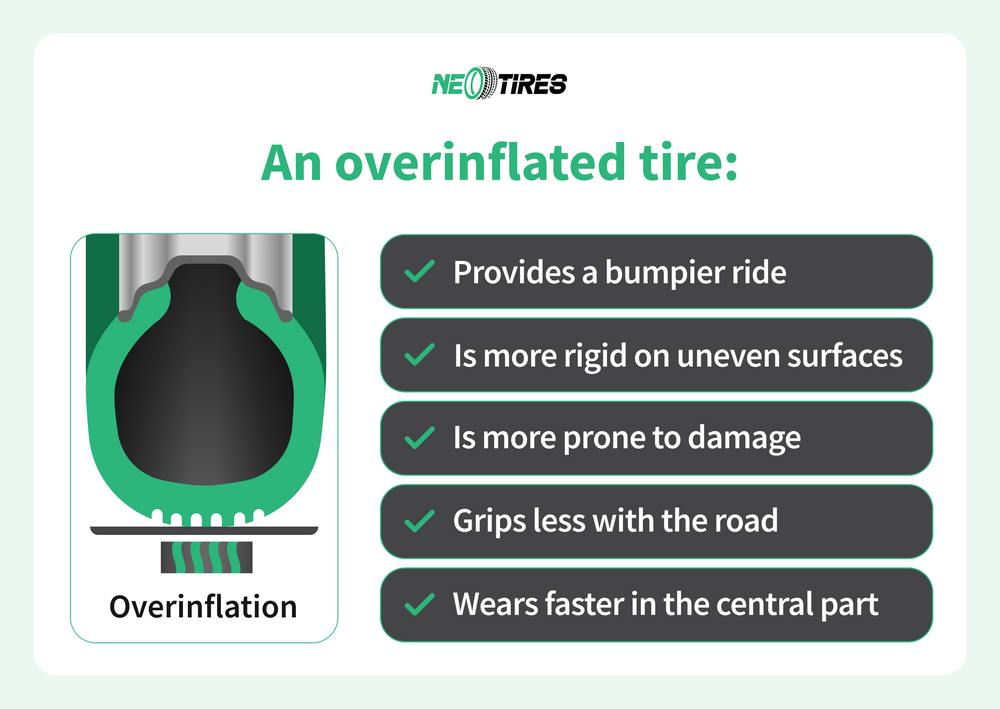Tire pressure is a cornerstone of efficient, safe, long-lasting, and performant tire service. Overinflating tires is a common practice adopted by many drivers in the U.S., yet it can lead to significant side effects drivers overlook. This article explains why tire overinflation is to be avoided, and what consequences drivers can expect otherwise.
Effects of Overinflated Tires
Driving on overinflated tires leads to four major effects: decreased traction and stability, uneven tread wear, high risk of blowouts, and lower comfort levels.
Decreased Traction and Stability
Too much tire pressure reduces the contact patch between the tire and the road. This leads to compromised grip and traction, especially on wet and slippery surfaces. A higher risk of skidding during emergency braking or abrupt maneuvers is to be expected with tire overinflation.
Uneven Tire Wear
Too much pressure in tires makes them change their shape, becoming more rounded. This makes the tread central part wear unevenly and faster than normal. Tire overinflation assumes higher maintenance costs as tires wear out rapidly, urging the need for tire replacement.
High Risk of Blowouts
Excess air levels in tires stress tire integrity especially with long drives and high speed, potentially leading to blowout. Blowouts are especially possible when combined with additional stress factors like aged tire rubber, worn tread, or excessive heat. Learn more on tire blowout here.
Tire Overinflation: FAQs
What Does Overinflation Do To a Tire?
While overinflation might seem beneficial for fuel economy, it entails the following adverse effects: tire uneven and premature wear, lower grip and handling, bumpier ride, and higher risks of blowout.
Is It Better To Overinflate or Underinflate Tires?
Both tire overinflation and underinflation are detrimental to driving quality, performance, and tire life. The best practice is to stick to the manufacturer's pressure recommendations.
| Factor | Underinflation | Overinflation |
|---|---|---|
| Tread Wear Pattern | Outer edges wear faster | Center tread wears faster |
| Fuel Efficiency | Decreases due to higher rolling resistance | May slightly increase but reduces traction |
| Ride Comfort | Softer ride but poor handling | Harsher ride with amplified road imperfections |
| Safety Risks | Higher blowout risk due to heat buildup | Higher blowout risk due to structural stress |
| Vehicle Handling | Sluggish response | Reduced traction and control |
Is 40 PSI Too High For Tires?
40 PSI can be acceptable for some high-performance vehicles, trucks, or SUVs, especially when carrying heavy loads. Most passenger cars in the U.S. fall within the 30-35 PSI pressure range, making 40 PSI unsuitable and potentially dangerous (lower traction, uneven wear, blowout risk, rarsher ride). The best practice is to follow the manufacturer's recommendation regarding your specific vehicle.
How Do I Know If My Tires Are Overinflated?
An overinflated tire has a too-rounded shape at the outer edges and increased stiffness. While driving, the ride feels excessively bouncy, especially on uneven roads. Also, the cornering feels sharp.




